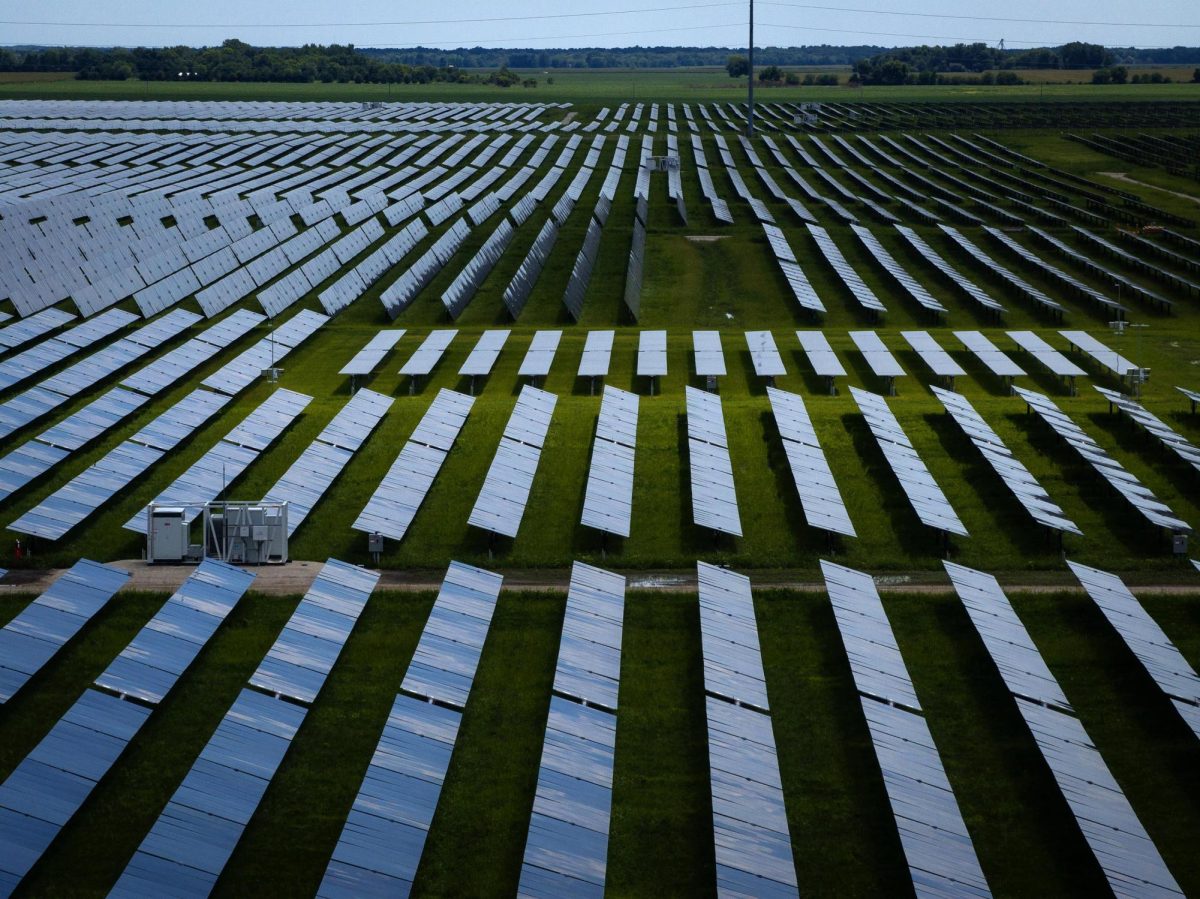
In 2024, the U.S. reported a record-breaking increase in solar energy generation capacity. Photo by E. Jason Wambsgans/Chicago Tribune
A recent report from the Solar Energy Industries Association (SEIA) showed that 2024 harbored a record-breaking increase in solar energy. In 2024, the United States power grid added 50 gigawatts of solar generation capacity, accounting for 84% of new electricity generation capacity. New electricity generation capacity measures the increase of how much energy a particular source can produce at full power. This is the largest expansion achieved by any energy technology in a single year for the past two decades.
The rapid increase in solar energy could indicate growth in the renewable energy sector. According to the United States Energy Information Administration, “We expect that U.S. renewable capacity additions—especially solar—will continue to drive the growth of U.S. power generation over the next two years.” As solar energy becomes more widely available across the United States, a future where most energy sources are renewable seems more attainable than ever before.
Although the Trump administration plans to cut funding to solar energy initiatives, solar generation capacity is still projected to increase in coming years. Government funding under president Biden created many advancements in the solar energy field, including cost reductions and infrastructure. These breakthroughs leave the country poised for even more expansion under Trump’s presidency, despite the lack of federal support for renewable energy.
Additionally, the expansion of the solar energy industry could create more jobs in the energy sector. The value of the solar market in the United States was 70.4 billion dollars in 2024, and is only projected to increase as solar generation capacity expands. “I’m glad that we’re making progress more quickly and it looks like solar energy will grow even more in the next few years,” says Mia Natale ’27. “I’m more confident now we’re not waiting 20 or so years to set goals, we’re actually focusing on what we can do now.”